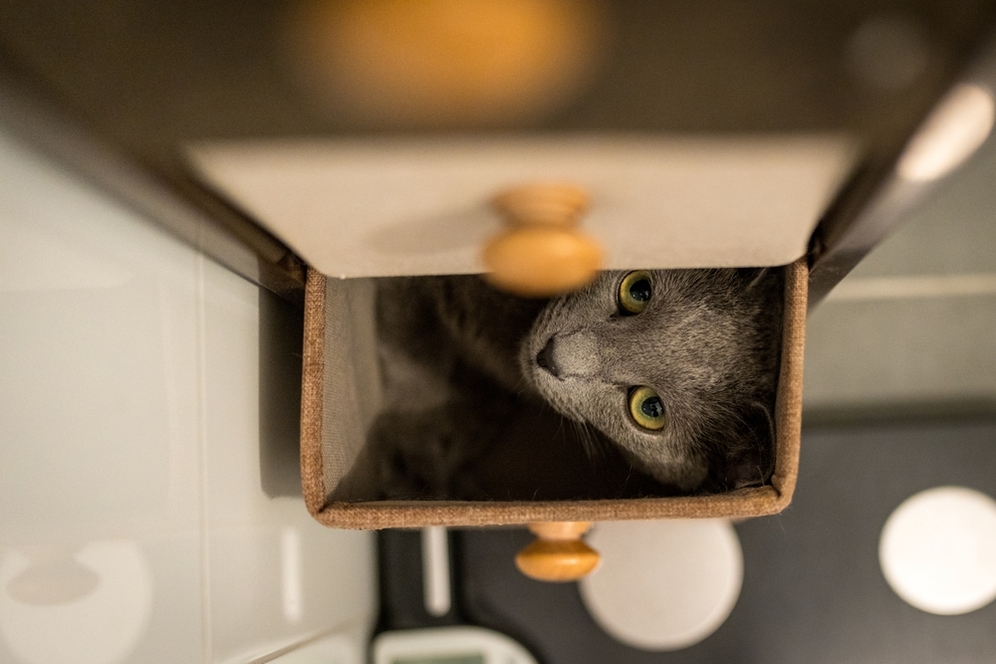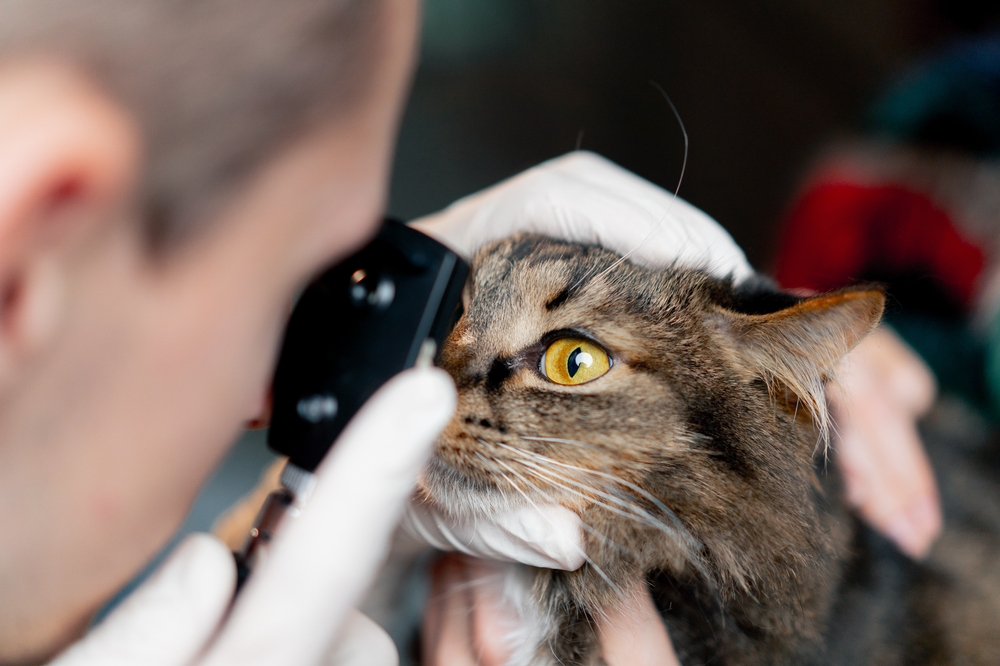Deciding to trap a cat for the first time is a huge step toward making a real difference for community cats. Whether you’re trying to help a new stray in your neighborhood or starting a Trap-Neuter-Vaccinate-Return (TNVR) effort for a local colony, your compassion is leading you to life-saving action. But it can also feel overwhelming. What kind of trap do you need? What bait works best? And what on earth do you do once the trap door closes?
Taking that first step is the hardest part. This guide is here to walk you through the process with clear, practical advice. Learning the fundamentals of humane cat trapping not only ensures the cat’s safety but also sets you up for success. With a little preparation and a lot of patience, you can confidently and safely help the cats in your community.
These are the moments that drive our mission at Gilu. Every T-shirt and tote we design is inspired by the quiet heroes in hoodies who spend their evenings setting traps and their mornings transporting cats. It’s tough, essential work, and it deserves to be celebrated. Our collections are a nod to the resilience of colony caretakers and the cats they protect, with designs that are as cozy as they are mission-driven.
Before You Trap: Preparation is Everything
Success in humane cat trapping begins long before you set the trap. Proper planning prevents stress for both you and the cat.
Step 1: Define Your Goal and Make a Plan
First, why are you trying to trap a cat? Your goal determines your next steps.
- TNR (Trap-Neuter-Return): Is the cat feral (unsocialized to humans) and part of a community colony? The goal is to spay/neuter, vaccinate, and return them to their outdoor home.
- Rescue and Adoption: Is the cat friendly, lost, or injured? The goal may be to bring them indoors for veterinary care and to find them a home.
- Medical Care: Does the cat have a visible injury or illness that needs immediate attention?
Once you know your goal, you need a solid plan. Do not trap a cat until you have a confirmed spay/neuter appointment and a safe place for them to recover. Trapping without a plan can lead to a scared cat being confined for too long, which is stressful and inhumane.
Step 2: Assemble Your Trapping Kit
Having the right tools makes the process smoother and safer. Here are some first-time cat trapping tips for your toolkit:
- A Humane Box Trap: A standard 30-36 inch trap is suitable for most adult cats. You can often borrow one from a local TNR group or animal shelter. Never use a trap that is not designed for cats.
- Bait: Canned tuna, mackerel, sardines in oil, or wet cat food are all effective. The smellier, the better!
- Trap Cover: An old towel, blanket, or sheet is essential. Covering the trap immediately after a cat is caught helps calm them down.
- Newspaper or Cardboard: Use this to line the bottom of the trap. It makes the trap more comfortable and helps with cleanup.
- Gloves: Thick gardening or work gloves will protect your hands.
- Zip Ties: Use these to secure the front and back doors of the trap once the cat is inside to prevent escapes.

The Trapping Process: A Step-by-Step Guide
Patience is your most important tool. It may take several attempts to trap a cat, especially if they are wary.
Step 1: Establish a Feeding Routine
If possible, start feeding the cat at the same time and place every day for a week or two before you plan to trap. This teaches the cat to associate the location with food, making them more likely to enter the trap.
Step 2: Prepare the Trap
On the day of trapping, withhold food for about 12-24 hours to ensure the cat is hungry. When you’re ready:
- Line the Trap: Place newspaper on the bottom, covering the trip plate so the cat doesn’t feel the wire under their paws.
- Bait the Trap: Place a small amount of bait at the very front of the trap to lure the cat in. Create a little trail of bait leading to the back of the trap. The main portion of the bait—about a tablespoon—should be placed behind the trip plate. The cat must step on the plate to get the food.
- Set the Trap: Carefully set the trap door according to the manufacturer’s instructions.
Step 3: Wait Patiently and Quietly
Place the trap on a level surface in the area where you normally feed the cat. Once the trap is set, move away. Watch from a distance where you won’t scare the cat—from your car, a window, or around a corner. Stay quiet and be patient.
Note: Traps should never be left unattended. If a cat enters and triggers the trap, it may injure itself while trying to escape. Always monitor traps closely to ensure the safety and well-being of the cat.
Success! What to Do Immediately After You Trap a Cat
The moment the trap door snaps shut can be startling for everyone. Your calm response is crucial.
- Cover the Trap: Approach the trap slowly and immediately cover it completely with your towel or blanket. The darkness has a calming effect and will help reduce the cat’s stress.
- Secure the Doors: Use zip ties to secure the front and back doors of the trap. A panicked cat can sometimes force a door open.
- Move the Trap to Safety: Gently move the trapped cat to a secure, quiet, and temperature-controlled location, like a garage, spare bathroom, or a covered area in your car. Keep them away from loud noises, other pets, and extreme temperatures.
- Check for Other Animals: Make sure you’ve trapped the correct cat and not a raccoon, opossum, or a neighbor’s pet.
Important Note: Do not attempt to touch the cat inside the trap. Even a cat that seems.

Post-Trapping Care and Next Steps
Once you’ve successfully trapped a cat, it’s time to determine your next steps based on your goal. Below, we outline the next steps for three common scenarios: TNVR, rescue and adopt, and medical care. Each path serves a unique purpose, and choosing the right one ensures the best outcome for the cat.
1. TNVR (Trap-Neuter-Vaccinate-Return)
If your goal is to manage the stray cat population and improve their quality of life, TNVR is the best approach. After trapping the cat, follow these steps:
- Confirm a Pre-Arranged Veterinarian Appointment: Take the cat to a clinic or veterinary service participating in TNVR. Many organizations offer low-cost options specifically for this purpose.
- Prepare for Recovery: After surgery and vaccinations, keep the cat in the trap or a secure enclosure until they recover, typically for 24-48 hours. Ensure they’re in a quiet, temperature-controlled space with access to water.
- Food and Water: Once they are fully awake, provide them with food and water.
- Monitor: Check on them periodically, but keep interaction to a minimum to reduce stress.
- Release: After the recovery period, return the cat to the exact location where you trapped them. Releasing them elsewhere is considered abandonment and can be dangerous for the cat. Open the trap door and step away, allowing the cat to leave when they are ready.
2. Rescue and Adopt
If the cat appears socialized or has potential for adoption, you may want to transition them into a loving home. Here’s how to proceed:
- Assess the Cat’s Behavior: A friendly demeanor or signs of trust (like meowing, purring, or approaching people) indicates the cat might thrive in a home setting. Refer feral cats to TNVR instead.
- Schedule Veterinary Care: Even if the cat appears healthy, they’ll need a full veterinary check-up, vaccinations, spaying/neutering, and screening for diseases like FIV/FeLV before being placed for adoption.
- Foster or Find Placement: If you can foster the cat, prepare a safe indoor space with food, water, and a litter box. Alternatively, connect with local rescues or shelters to help find adoptive homes. Online platforms like pet adoption websites can also spread the word about cats ready to find their forever family.
3. Medical Care
If you’ve trapped a cat showing signs of illness or injury, swift action is crucial to ensure their health and well-being. Take the following steps:
- Seek Immediate Veterinary Attention: Bring the cat directly to a veterinarian or emergency clinic, especially in cases of visible wounds, infections, or severe lethargy.
- Follow Treatment Plans: Be prepared for potential costs and ongoing care needs. Treatment may involve medications, wound care, or specialized interventions.
- Assess Rehabilitative Needs: After medical treatment, decide if the cat is best suited for release (TNVR) or continued care in preparation for adoption. Consult with your vet or a local rescue for guidance.
By defining your goal before taking action, you create a clear path that ensures the safety and well-being of the cat. Each scenario requires care and attention, but with the right approach, you’re making a world of difference in their lives!
You’ve done the hard part! Now, follow your plan.
On this section you only covered one goal of trapping:
Holding for Surgery
If you are holding the cat overnight for a morning vet appointment:
- Keep them in the covered trap in a secure, quiet location.
- You can slide a thin plastic tray under the trap for easier cleanup.
- Unless directed otherwise by your vet, do not provide food after midnight before surgery. You can provide a small amount of water in a bowl that won’t easily tip over.
The Veterinary Visit
Transport the cat in the covered trap. Inform the veterinary staff that the cat is feral or a stray. They are trained to handle cats safely while they are in the trap. The cat will receive an anesthetic before being removed from the trap for their surgery and examination. This is when they will also be vaccinated and “ear-tipped”—the universal sign that a community cat has been spayed or neutered.
Your work isn’t just about one cat. It’s about breaking a cycle of suffering. It’s the kind of hands-on compassion that inspires everything we do.
Ready to take the next step in your rescue journey? Download our “Quick Guide for First-Time Cat Trappers“—a printable, easy-to-follow checklist that you can take with you on your first trapping adventure.
And when you’re done with the hard work, treat yourself to something that gives back. Check out the Autumn Collection on the GiluCats Store. Every item helps fund the vital TNVR and rescue work supported by GiluFunds. You’re not just buying a shirt; you’re funding the future of cat welfare.










0 Comments